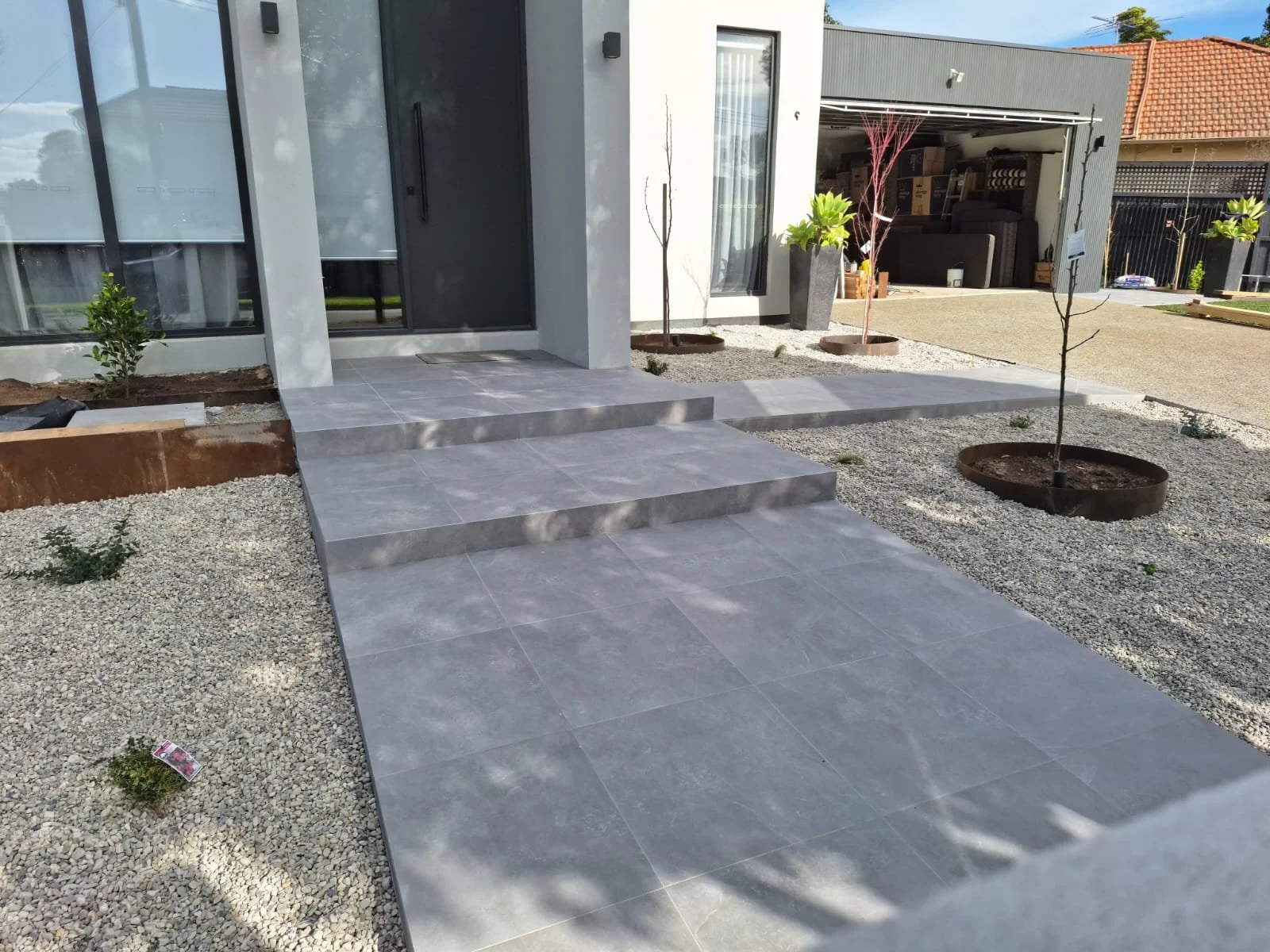A Tiling Expert's Guide to Outdoor Paving
Outdoor paving is a versatile and elegant solution to elevate your patio, garden, poolside, or driveway. As a tiling business owner with years of experience in transforming outdoor spaces, I’d like to share valuable insights and expertise to help you unleash the beauty and functionality of your exteriors. In this blog post we’ll explore the purpose of paving, compare concrete and pavers, discuss various types of pavers, reveal the most popular choices, and share essential tips for successful paving projects.
What is paving used for?
Paving serves multiple purposes in outdoor spaces. It provides a solid and stable surface for walking, seating, or driving, enhancing accessibility and safety. Paving also adds aesthetic appeal, transforming mundane areas into captivating outdoor retreats. Whether you want to create a charming patio for relaxing evenings or an inviting driveway to welcome guests, paving offers endless design possibilities.
Is it better to lay concrete or pavers?
The choice between concrete and pavers depends on your specific needs and preferences. While concrete is cost-effective and offers a clean, uniform look, pavers offer greater design flexibility and are easier to repair or replace if damaged. As a tiling business owner, I often recommend pavers for their versatility, durability, and aesthetic charm, making them a popular choice among homeowners.
What types of pavers are there?
Pavers come in various materials, sizes, shapes, and finishes to suit different outdoor settings. Some common types include:
Concrete pavers: Durable and budget-friendly, available in a range of colors and textures.
Natural stone pavers: Exude elegance and timeless beauty, available in materials like travertine, limestone, and slate.
Clay pavers: Classic and charming, they add warmth to any outdoor space.
Porcelain pavers: Modern and versatile, known for their strength and resistance to stains and fading.
Can you pave on top of soil or does paving need to be prepared?
Proper preparation is crucial for successful paving projects. Paving on top of soil without adequate base preparation can lead to uneven surfaces and premature damage. Excavating the area, adding a compacted base layer of crushed stone, and using sand for leveling before laying the pavers ensures a stable foundation and enhances the longevity of any paved surface.
We were called by a client to rectify an issue where the initial leveling was not done accurately, resulting in some areas having uneven pavers. We carefully removed the affected pavers, re-leveled the base and installed new pavers, ensuring a smooth and uniform surface. This experience reinforced the significance of precise preparation to achieve flawless paving results.
How do you keep weeds out of pavers?
Weeds can be a nuisance in paved areas, hence why we recommend paving on a prepared surface to minimise growth through the underlying surfaces. With proper maintenance you can keep weeds at bay by regularly sweeping or blowing away debris and applying a weed inhibitor can prevent weed growth between the pavers. Additionally, sealing the pavers can further deter weed growth and enhance their longevity.
Should you seal your pavers?
Sealing your pavers can protect them from stains, fading, and water damage. It also simplifies maintenance by making them easier to clean. While some pavers may not require sealing, it is generally recommended to enhance their performance and preserve their appearance over time.
Conclusion: Outdoor paving is a fantastic way to transform your exteriors into captivating and functional spaces. Proper preparation and installation are key to success, whether you opt for concrete pavers, natural stone, or porcelain. At Capstone Tiling, we are dedicated to delivering exceptional paving results that add value to your home and enrich your outdoor living experience. Revitalize your outdoor spaces with the elegance and charm of expertly laid pavers!


